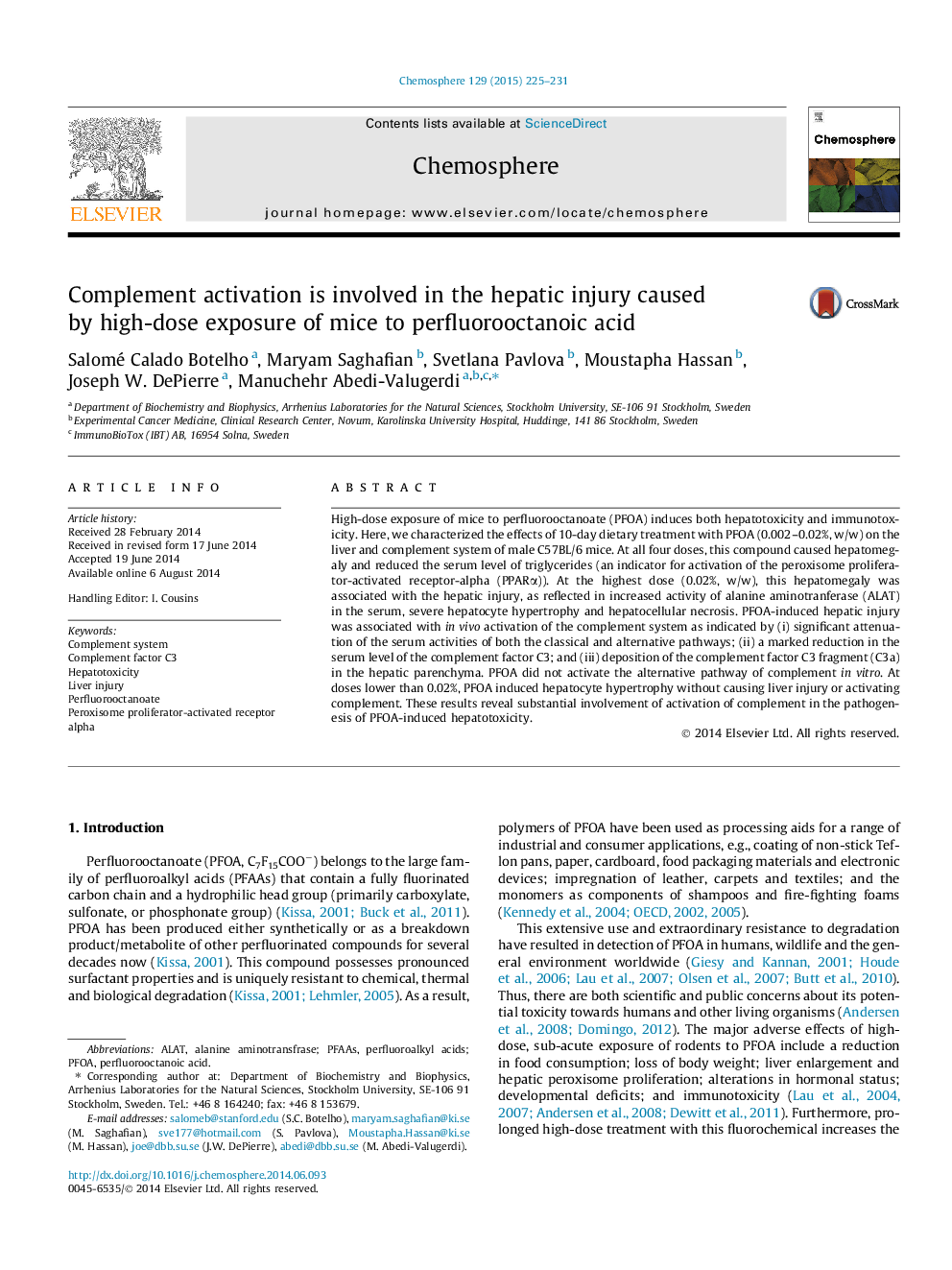| Article ID | Journal | Published Year | Pages | File Type |
|---|---|---|---|---|
| 4408456 | Chemosphere | 2015 | 7 Pages |
High-dose exposure of mice to perfluorooctanoate (PFOA) induces both hepatotoxicity and immunotoxicity. Here, we characterized the effects of 10-day dietary treatment with PFOA (0.002–0.02%, w/w) on the liver and complement system of male C57BL/6 mice. At all four doses, this compound caused hepatomegaly and reduced the serum level of triglycerides (an indicator for activation of the peroxisome proliferator-activated receptor-alpha (PPARα)). At the highest dose (0.02%, w/w), this hepatomegaly was associated with the hepatic injury, as reflected in increased activity of alanine aminotranferase (ALAT) in the serum, severe hepatocyte hypertrophy and hepatocellular necrosis. PFOA-induced hepatic injury was associated with in vivo activation of the complement system as indicated by (i) significant attenuation of the serum activities of both the classical and alternative pathways; (ii) a marked reduction in the serum level of the complement factor C3; and (iii) deposition of the complement factor C3 fragment (C3a) in the hepatic parenchyma. PFOA did not activate the alternative pathway of complement in vitro. At doses lower than 0.02%, PFOA induced hepatocyte hypertrophy without causing liver injury or activating complement. These results reveal substantial involvement of activation of complement in the pathogenesis of PFOA-induced hepatotoxicity.
